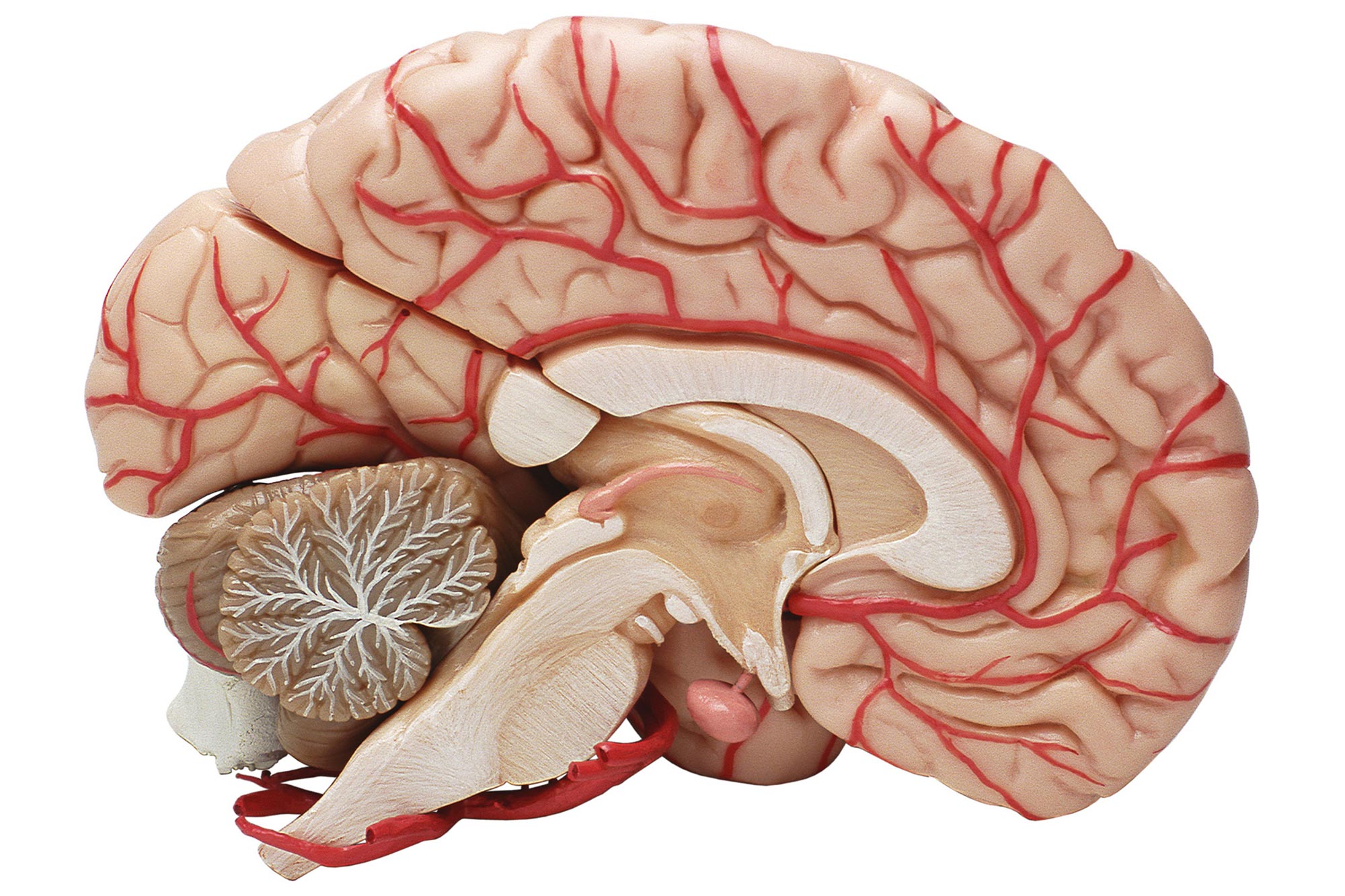
Eine neue Studie untersuchte die Unterschiede und Ähnlichkeiten von Zellen im präfrontalen Kortex – der vorderen Region des Gehirns, einem Bereich, der eine zentrale Rolle bei höheren kognitiven Funktionen spielt – zwischen Menschen und nichtmenschlichen Primaten wie Schimpansen, Rhesusaffen und Krallenaffen.
Eine neue Studie zeigt, dass die Gehirne von Menschen und nichtmenschlichen Primaten bemerkenswert ähnlich sind, trotz der sehr offensichtlichen physischen Unterschiede zwischen ihnen. Und doch können kleinste Veränderungen große Unterschiede bei Entwicklungs- und psychiatrischen Störungen bewirken.
Das Verständnis der molekularen Unterschiede, die das menschliche Gehirn auszeichnen, kann Wissenschaftlern helfen, Störungen in seiner Entwicklung zu untersuchen. Eine neue Studie untersucht die Unterschiede und Ähnlichkeiten von Zellen im präfrontalen Kortex – der vorderen Region des Gehirns, einem Bereich, der eine zentrale Rolle bei höheren kognitiven Funktionen spielt – zwischen Menschen und nichtmenschlichen Primaten wie Schimpansen, Rhesusaffen und Krallenaffen. Kürzlich im Magazin erschienen WissenschaftDie Studie wurde von einem Forscherteam durchgeführt, darunter Andre Sousa, Professor für Neurowissenschaften an der University of Wisconsin-Madison.
Die zellulären Unterschiede zwischen diesen Arten können Schritte in ihrer Evolution aufklären und wie diese Unterschiede mit Erkrankungen wie Autismus und geistigen Behinderungen in Verbindung gebracht werden können, die beim Menschen beobachtet werden. Sousa, der am Waisman Center der UW-Madison Entwicklungsbiologie des Gehirns studiert, beschloss, in Zusammenarbeit mit dem zu beginnen, die Zellen im präfrontalen Kortex zu untersuchen und zu kategorisieren[{“ attribute=““>Yale University lab where he worked as a postdoctoral researcher.

Researchers analyzed genetic material from cells in the prefrontal cortex (the area shaded in each brain) from four closely-related primates to characterize subtle differences in cell type and genetics. University of Wisconsin-Madison
“We are profiling the dorsolateral prefrontal cortex because it is particularly interesting. This cortical area only exists in primates. It doesn’t exist in other species,” Sousa says. “It has been associated with several relevant functions in terms of high cognition, like working memory. It has also been implicated in several neuropsychiatric disorders. So, we decided to do this study to understand what is unique about humans in this brain region.”
Sousa and his lab collected genetic information from more than 600,000 prefrontal cortex cells from tissue samples from humans, chimpanzees, macaques and marmosets. They analyzed that data to categorize the cells into types and determine the differences in similar cells across species. Unsurprisingly, the vast majority of the cells were fairly comparable.
“Most of the cells are actually very similar because these species are relatively close evolutionarily,” Sousa says.

Andre Sousa. Credit: Photo by Andy Manis
Sousa and his collaborators found five cell types in the prefrontal cortex that were not present in all four of the species. They also found differences in the abundances of certain cell types as well as diversity among similar cell populations across species. When comparing a chimpanzee to a human the differences seem huge — from their physical appearances down to the capabilities of their brains. But at the cellular and genetic level, at least in the prefrontal cortex, the similarities are many and the dissimilarities sparing.
“Our lab really wants to know what is unique about the human brain. Obviously from this study and our previous work, most of it is actually the same, at least among primates,” Sousa says.
The slight differences the researchers found may be the beginning of determining some of those unique factors, and that information could lead to revelations about development and developmental disorders at a molecular level.
“We want to know what happened after the evolutionary split between humans and other primates,” Sousa says. “The idea is you have a mutation in a gene or in several genes and those genes now have slightly different functions. But if these genes are relevant for brain development, for example, how many of a certain cell is produced, or how cells are connecting to other cells, how is it affecting the neuronal circuitry and their physiological properties? We want to understand how these differences lead to differences in the brain and then lead to differences we can observe in adults.”
The study’s observations were made in the brains of adults, after much of the development is complete. This means that the differences may be occurring during the brain’s development. So, the researchers’ next step is to study samples from developing brains and extend their area of investigation past the prefrontal cortex to potentially find where and when these differences originate. The hope is that this information will lead to a more robust foundation to lay developmental disorder research on top of.
“We are able to do extraordinary things, right? We are studying life itself, the universe, and so much more. And this is really unique when you look around,” says Sousa, whose team included graduate students Ryan Risgaards and Zachary Gomez-Sanchez, research intern Danielle Schmidt, and undergraduate students Ashwin Debnath and Cade Hottman. “If we have these unique abilities, it has to be something in the brain, right? There is something in the brain that allows us to do all of that and we are really interested in knowing what it is.”
For more on this research, see New Clues to What Makes the Human Brain Different.
Reference: “Molecular and cellular evolution of the primate dorsolateral prefrontal cortex” by Shaojie Ma, Mario Skarica, Qian Li, Chuan Xu, Ryan D. Risgaard, Andrew T. N. Tebbenkamp, Xoel Mato-Blanco, Rothem Kovner, Željka Krsnik, Xabier de Martin, Victor Luria, Xavier Martí-Pérez, Dan Liang, Amir Karger, Danielle K. Schmidt, Zachary Gomez-Sanchez, Cai Qi, Kevin T. Gobeske, Sirisha Pochareddy, Ashwin Debnath, Cade J. Hottman, Joshua Spurrier, Leon Teo, Anthony G. Boghdadi, Jihane Homman-Ludiye, John J. Ely, Etienne W. Daadi, Da Mi, Marcel Daadi, Oscar Marín, Patrick R. Hof, Mladen-Roko Rasin, James Bourne, Chet C. Sherwood, Gabriel Santpere, Matthew J. Girgenti, Stephen M. Strittmatter, André M. M. Sousa and Nenad Sestan, 25 August 2022, Science.
DOI: 10.1126/science.abo7257


